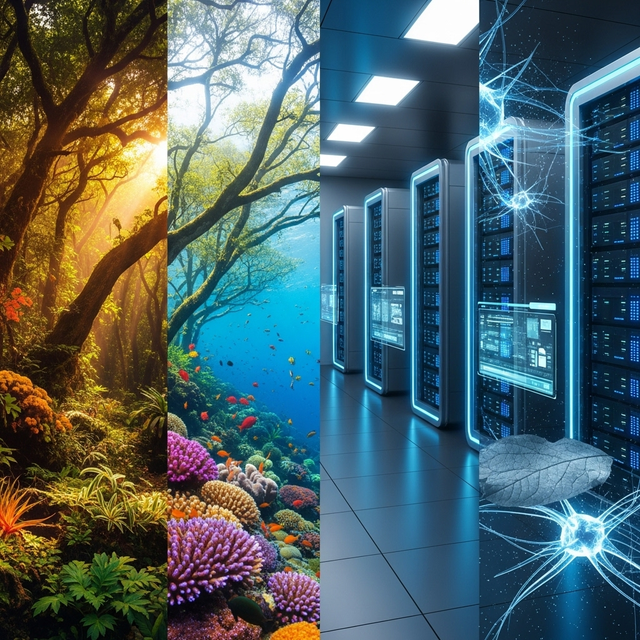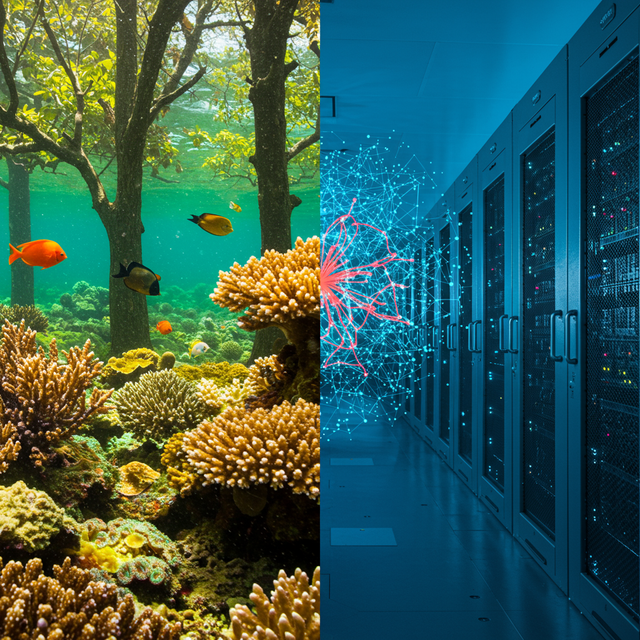The Green Algorithm: How AI is Revolutionizing Ecology
The pressing challenges of climate change, biodiversity loss, and resource depletion demand innovative solutions. While conventional ecological methods have long been our primary defense, a powerful new ally has entered the arena: Artificial Intelligence (AI). Far from being a futuristic concept, AI is rapidly becoming the essential "green algorithm" guiding conservation efforts, resource management, and climate modeling.
Here at SteemitWallet.com, we believe in the power of informed technology to build a better future. Let’s explore how AI is being deployed in ecology, examining both the profound benefits it offers and the critical pitfalls we must navigate.
The Benefits: AI as Nature’s Super-Analyst
AI’s strength lies in its ability to process vast quantities of complex, disparate data at speeds no human team ever could. In the ecological sector, this translates into unprecedented monitoring and predictive capabilities.
- Precision Monitoring and Biodiversity Tracking
One of the most laborious tasks in conservation is tracking wildlife populations and habitat health. AI is transforming this through:
Acoustic Monitoring: AI algorithms can analyze thousands of hours of audio recordings from rainforests or oceans, instantly identifying specific bird calls, whale songs, or the sounds of illegal logging, providing real-time alerts to rangers.
Satellite Imagery Analysis: Deep learning models can rapidly scan high-resolution satellite images to map deforestation, track glacial melt, or identify subtle changes in vegetation health far more accurately than manual surveying.
Automated Species Identification: Camera traps placed in the wild feed data to AI systems trained to recognize individual animals (e.g., identifying specific tigers by their stripe patterns), vastly improving population censuses.
- Climate Modeling and Prediction
Understanding future climate impacts is crucial for proactive adaptation. AI excels at handling the nonlinearity of climate data:
Enhanced Forecasting: Machine learning refines complex climate models, improving long-range predictions for extreme weather events, droughts, and sea-level rise, allowing governments and communities to prepare efficiently.
Carbon Sequestration Optimization: AI can model which reforestation or soil health strategies will sequester the most carbon under specific local conditions.
- Smart Resource Management
Efficiency is key to reducing our ecological footprint. AI drives smarter systems across industries:
Precision Agriculture: AI analyzes soil moisture, nutrient levels, and localized weather to tell farmers exactly how much water and fertilizer to use, dramatically cutting down on resource waste and chemical runoff.
Smart Grids: AI optimizes energy distribution, better integrating intermittent renewable sources like solar and wind power, thus reducing reliance on fossil fuel backup plants.
The Disadvantages: Ethical and Practical Hurdles
While the potential is exhilarating, the deployment of AI in ecological settings is not without significant challenges that require careful governance.
- The Data Divide and Bias
AI systems are only as good as the data they are trained on.
Data Scarcity: In remote or underfunded ecological projects, there may simply not be enough high-quality, labeled data available to train robust models, leading to underperformance or failure.
Geographic Bias: If an AI model designed to spot illegal fishing is trained primarily on data from North Atlantic waters, it might perform poorly when deployed in the South Pacific due to different vessel types or lighting conditions.
High Implementation Costs
Developing, deploying, and maintaining sophisticated AI infrastructure—including sensors, cloud computing, and specialized data scientists—requires significant upfront capital. This can exclude conservation groups in developing nations that often face the most severe environmental crises.The "Black Box" Problem
Some advanced deep learning models operate as "black boxes," meaning it can be difficult to understand why the AI made a specific recommendation. If an AI advises radically changing water flow management in a river basin, ecologists need transparent reasoning to trust the suggestion, especially when ecosystem health is at stake.Energy Consumption of AI Itself
Ironically, training the massive AI models required for complex climate simulations consumes substantial energy, often contradicting the very goals they are trying to achieve. Developing "greener" AI—more efficient algorithms—is an ongoing challenge.
Conclusion: Guiding the Green Algorithm
Artificial Intelligence offers a phenomenal leap forward in our ability to understand, predict, and protect our planet. It provides the necessary tools to move from reactive conservation to proactive environmental stewardship.
However, its success hinges on responsible implementation. We must focus on democratizing access to these tools, ensuring data sets are inclusive, and maintaining human oversight to interpret and validate the outputs of these powerful green algorithms. By balancing technological innovation with ecological wisdom, AI can truly become the vital partner we need in securing a sustainable future.

